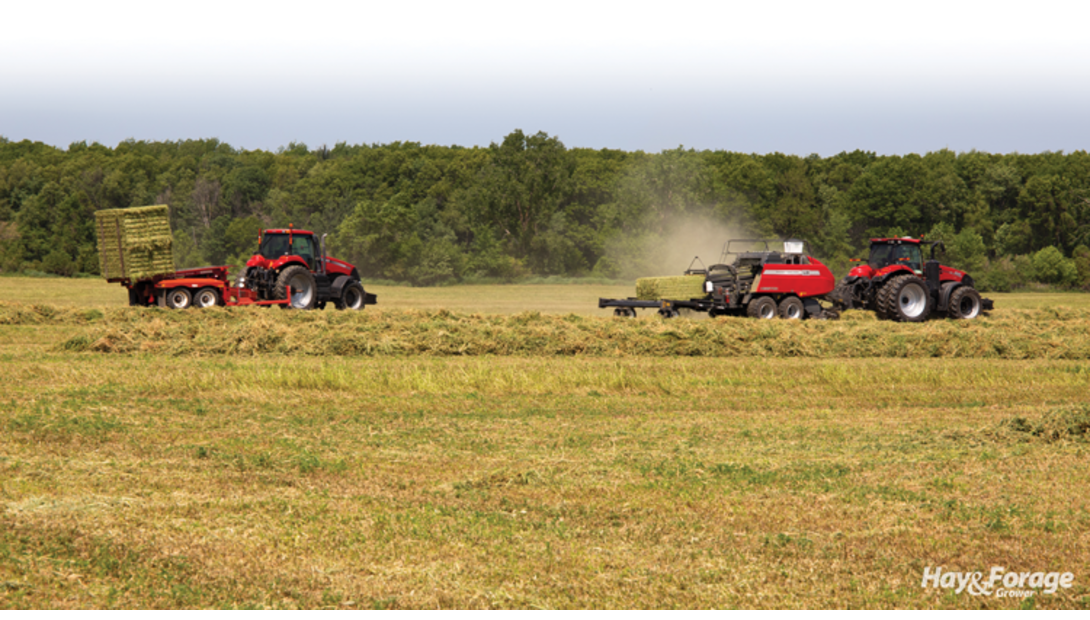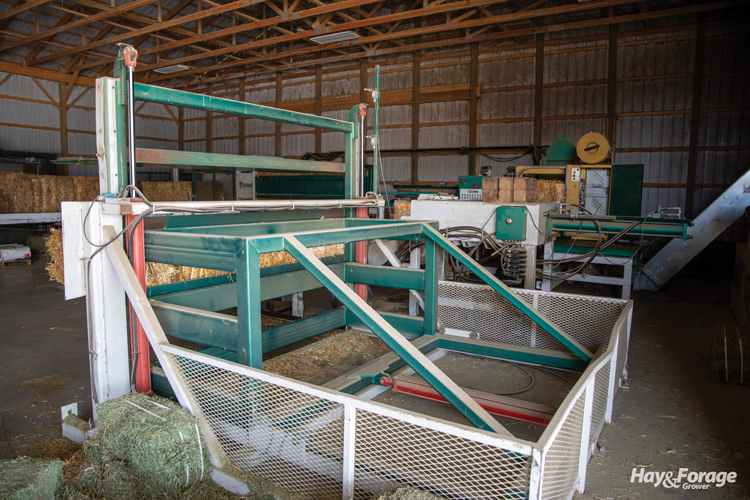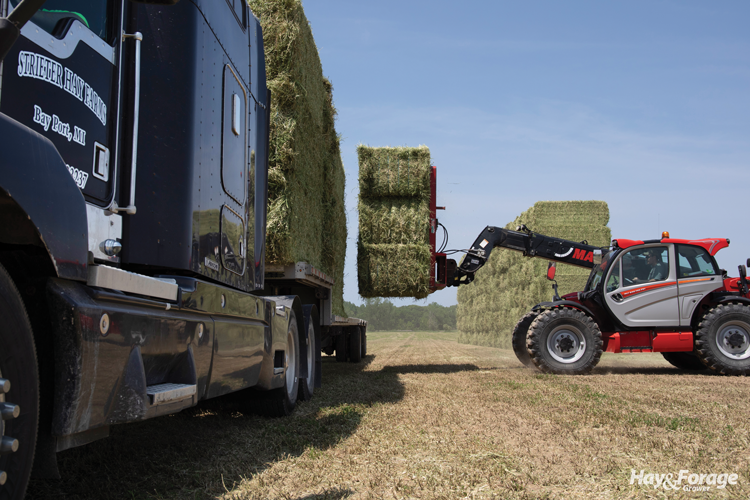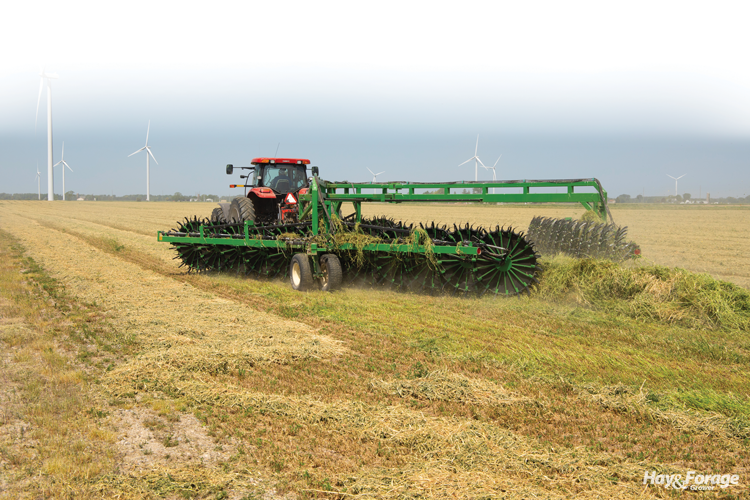
It's often difficult to sort out circumstance, coincidence, and luck.
But, along with a heaping helping of hard work and good judgment, these three uncontrollable factors usually play a role in success.
That’s certainly the case for John Strieter and his older brother, Mike, who operate Strieter Hay Farms in Michigan’s Thumb Region.
The farm sits less than 2 miles from Lake Huron’s Saginaw Bay that forms the western Thumb’s shoreline. It’s not a location where you would anticipate finding a commercial hay farm. The landscape is mostly characterized by row crops and large dairy farms that prefer their forage out of a bunker or pile.
It was circumstance that the brothers set down roots here. This was where their grandparents had a small farm that they worked on in their younger years and would eventually inherit. The brothers’ father had to quit farming because of health concerns.
“As kids, we only baled a little straw,” John recalled. “I started baling some hay in high school on grandma’s farm in the mid-1990s, then slowly started adding hay ground and renting land from neighbors. We really didn’t ramp up the hay business until about 2006 when Mike, who by that time was married and employed elsewhere, came back to the farm to help me, and we bought our first big square baler.”

In those early years, most of the baling was for wheat straw, which was plentiful in the region. Over time, John started making new connections for selling hay, and that business grew.
“Early on, we were putting up a lot of small square bales and trying everything possible not to have to purchase a hay press, including pulling two balers at a time with double hitches. We had five small square balers back then. Still, we could only do 100 acres a day with those little balers but did 300 acres a day with our big square balers. At one point, we ramped up to doing 5,000 acres of just straw. Of course, we only had about 250 acres of hay at that time,” he added.
In addition to their own farm, John and Mike had been asked by another much older brother pair to help them with their crop farm when available. The Strieters accepted the offer and had helped out for seven years when that duo decided to retire in 2015 and offered John the first chance at renting their over 2,000-acre farm and an opportunity to purchase their farm equipment on contract, which John was able to work out with his banker. Circumstance, coincidence, or luck — take your pick.
“Once we got established with small square balers and bought a new stack wagon to add to our others, we still couldn’t get enough done, especially with the added acreage,” John said. “I saw a Steffen bale press out in Oregon and basically determined that we could have one of those for the cost of our small square bale equipment. We already had two 3x4 big square balers for straw and rained on hay and soon added a third baler. The hay press gave us a small bale marketing option without actually needing to use small square balers,” he further explained.
“Having the high-density big balers and the press increased our capability to add more acres,” John noted. “We also started doing some baleage, but the market wasn’t that great for us. That’s when we started thinking about adding hay dryers.”
In 2018, Strieter Hay Farms installed their first two Chinook hay dryers. Four years later, an Agri Green dryer was added, and soon later, a bale cooling bed was installed. About 20% to 30% of the hay goes through the dryers, depending on the year.
“Both the press and the dryers offer us more flexibility from a production and marketing standpoint,” John said. “We can move product as big squares or small squares depending on market dynamics.”

An alfalfa focus
These days, Strieter Hay Farms consists of 5,000 acres, most of which are leased. There are 1,800 acres of hay, and they bale 7,000 to 8,000 acres of wheat straw each year. The farm also grows corn, soybeans, winter wheat, and sugarbeets. John heads up the business end of Strieter Hay Farms, while Mike is an accomplished machinery mechanic.
The farm’s hay acres consist of an equal number of pure alfalfa and alfalfa-orchardgrass mixtures. Occasionally, some timothy is grown. “Because there’s not a lot of dry hay made in the area, I feel this gives us a competitive advantage when leasing land because we can offer a perennial forage in the crop rotation, which is something a lot of landowners find appealing,” John surmised. “We also feel our hay crops enhance our row-crop yields, but the hay ground remains our most profitable acreage.”
Alfalfa seedings are done both in the spring and late summer. When spring seeded, the new stands usually follow sugarbeets from the year before. Late-summer seedings are made after winter wheat is harvested. Both are done into a conventional, tilled seedbed using 15 to 20 pounds per acre of coated Roundup Ready-traited seed. Fields that are mixed alfalfa-grass are seeded with straight alfalfa and then sprayed with glyphosate in the seedling stage. It’s then that the orchardgrass is interseeded. The Strieters are able to get three to four cuttings per year on established stands, with first-crop cutting generally beginning toward the end of May. Alfalfa stands are kept in production for four to six years, and average annual alfalfa yields across the farm range from 4.5 to 5 dry matter tons per acre.

Dry and bale quickly
Hay is cut and laid into 9-foot swaths with two Pöttinger triple mowers equipped with Circle C conditioning rolls. To enhance field drying, they use a hay fluffer/tedder designed and built by fellow Ohio haymaker John Russell. Windrows are formed with three Circle C wheel rakes with the center dividers. In lighter cuttings, two Oxbo mergers are used to further enlarge windrows and ensure the balers are running at full capacity to maintain flake count and minimize leaf loss.
“All of our tractors are set up to straddle the swath,” John said. “We never drive on cut hay and actually end up driving in the same tracks with the mower, fluffer, rake, and baler. I think we gain yield by doing that,” he added.
The Strieters’ three Massey Ferguson high-density 3x4 balers are equipped with preservative applicators, Gazeka moisture monitors, Bale Skis, and PhiBer bale accumulators. Mike explained that they like to target a 45-flake count for each bale, which has been made easier with the continuously variable transmissions (CVT) on their tractors.
Bales are picked up out of the field with Pro Ag pull-type stack wagons and stacked at the field’s edge where they are loaded on a truck with a telehandler. An on-farm drive-over scale is used to weigh everything that is baled. John tracks the production from every field of hay and straw. This offers an accurate means of determining his own yields, but it also enables him to pay landowners by the ton for windrowed straw that he purchases in the field.
For many years, the Strieters would need to tarp some of their hay and straw, but with the recent addition of a few new sheds, all of the hay is now stored under a roof.

Repeat clientele
The bulk of the Strieters’ hay customers are either local dairy farms or horse operations in the eastern U.S. John explained that most of their equine and retail store hay is moved through a broker, but he has more direct involvement with his dairy hay and straw clients. A lot of the straw sold to dairies is included in total mixed rations. Over the years, John said they’ve been able to build and develop a consistent customer base, as most successful hay producers do.
As for now, John has no immediate intentions of growing the operation much larger. They currently have six full-time employees and numerous part-time seasonal workers. Like many hay farms, weather and the availability of good labor remain their biggest challenges. John and his wife, Amanda, have two young boys, and Mike and his wife, Lesley, also have two children with his oldest son, Lane, already helping out on the farm.
John currently serves on the board of directors of the National Hay Association (NHA). He will become president of that organization later this year. A strong proponent of the NHA, John said, “I’ve really gotten a lot of return from my participation in the National Hay Association. It seems like every year I attend the meetings I’m able to make money by forging a new client connection or hearing about a new product or practice that I can use.”
Strieter Hay Farms, in a relatively short amount of time, has grown to become one of the premier hay operations in the humid U.S., where patience in haymaking is a virtue. Still, their focus on efficient field drying and baling, coupled with artificial hay drying when needed, has enabled them to offer a quality product that can meet or exceed any customer’s needs.
This article appeared in the July XL 2024 issue of Hay & Forage Grower on pages 20-23.
Not a subscriber? Click to get the print magazine.

